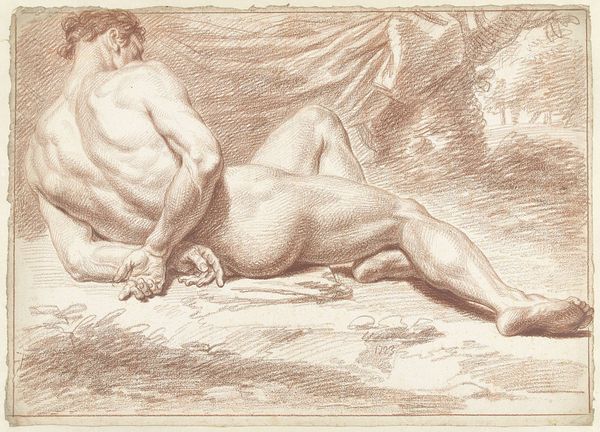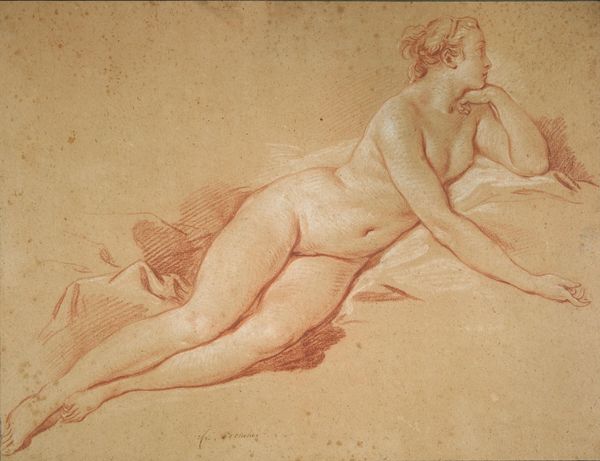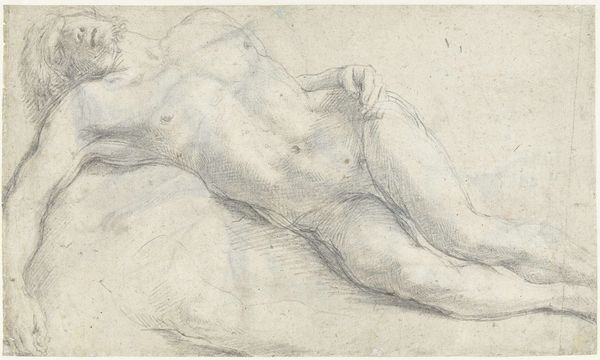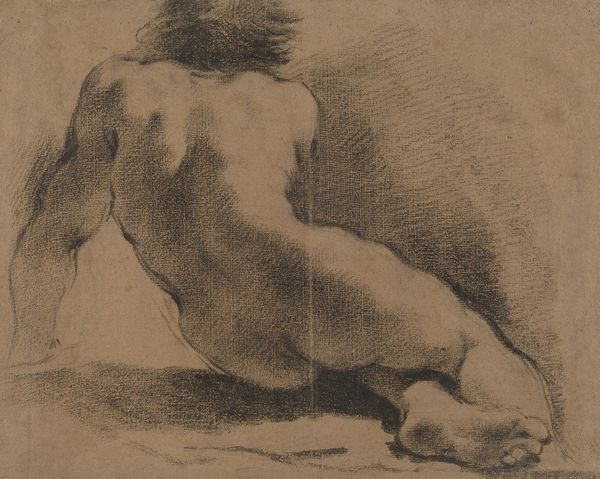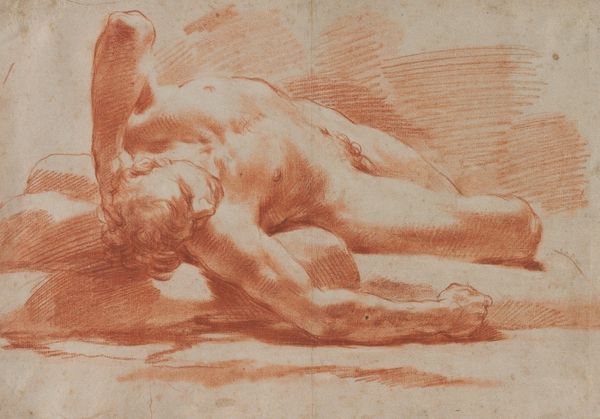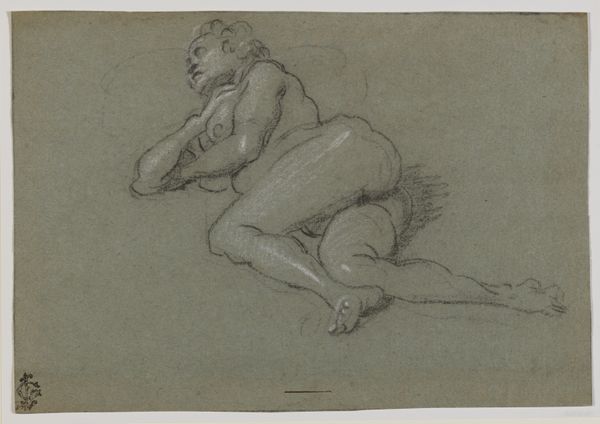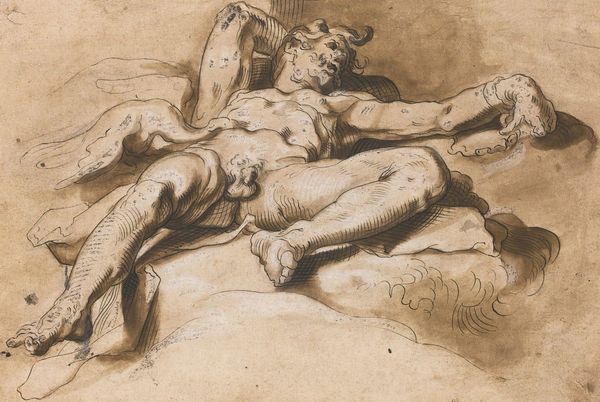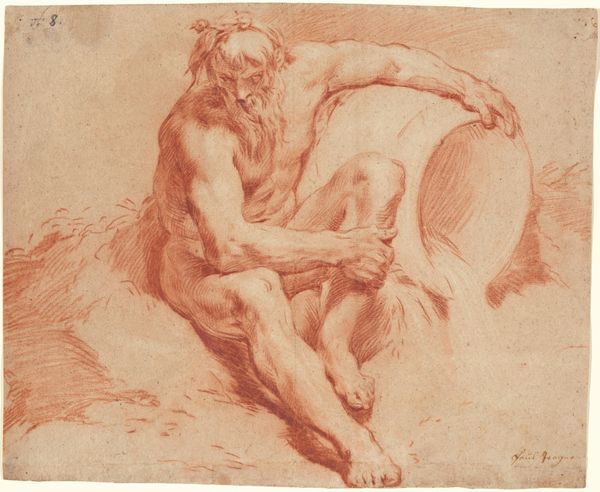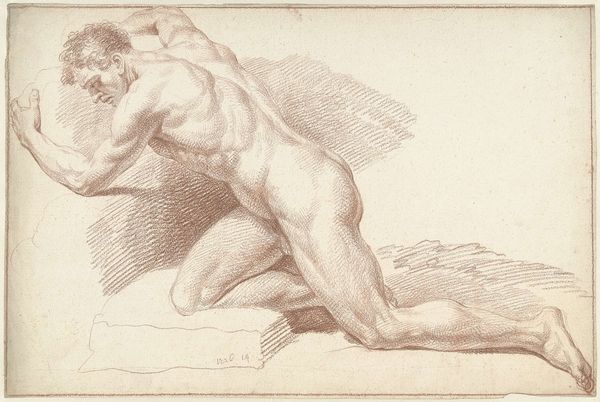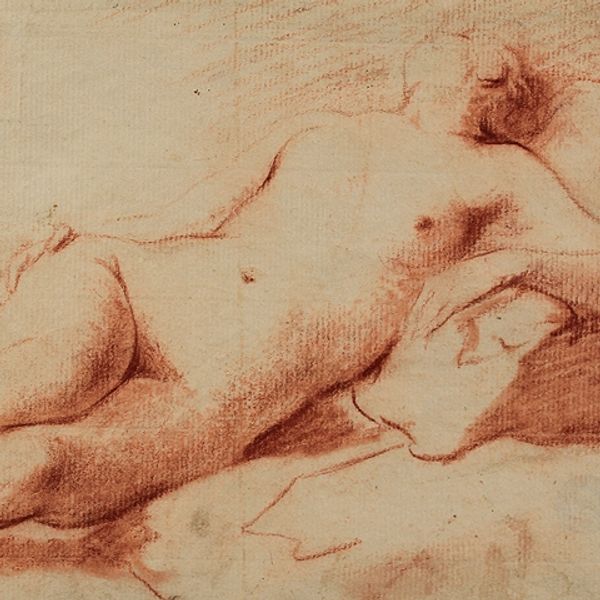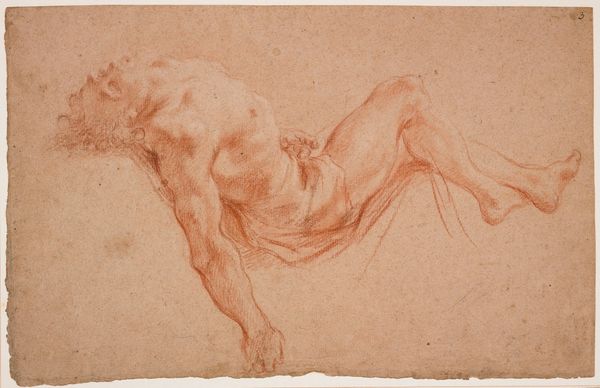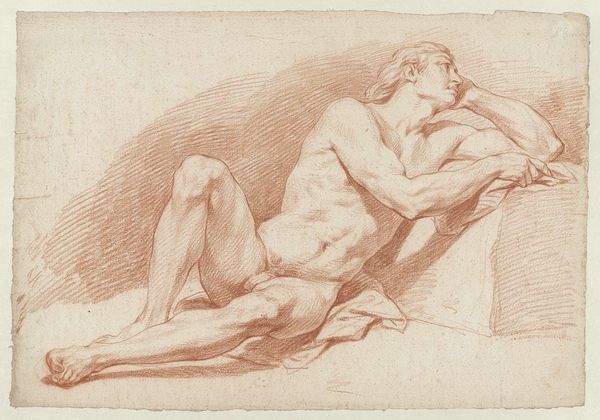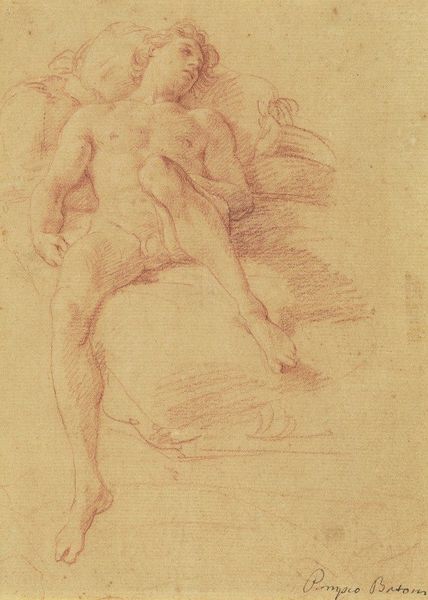
Copyright: Public Domain: Artvee
Giovanni Battista Tiepolo made this drawing of a seated male nude in the eighteenth century, using chalk on blue paper. The pose and the medium were typical for the kind of academic study that prepared artists for large-scale commissions. In the 1700s, academies across Europe played a crucial role in shaping the visual arts. They standardised the curriculum and promoted particular styles, and history painting was at the top of this hierarchy. But, there was a tension between the need to study from life and the social decorum of the time, which considered the nude body as potentially offensive. In Italy, life drawing took place behind closed doors and usually only men were allowed to attend. Looking at the artwork you get a glimpse into these institutions that shaped the production and consumption of art. By exploring historical documents and academic records, we can better understand the social and institutional contexts that shaped artists such as Tiepolo. The meaning of this work is contingent on such historical understanding.
Comments
No comments
Be the first to comment and join the conversation on the ultimate creative platform.
